“This is why we can’t have nice things.”
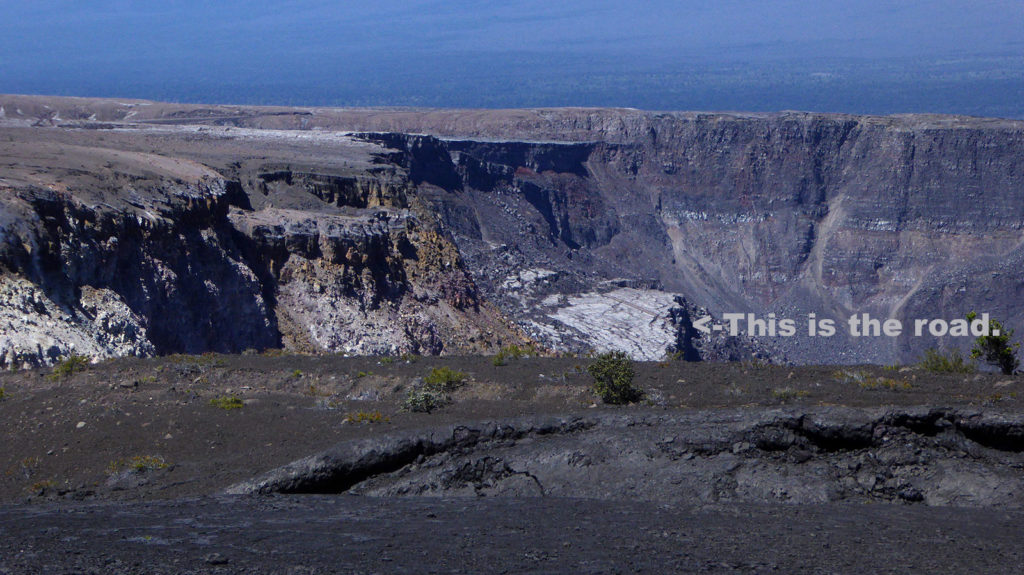
So says my friend Jessica Ferracane, who happens to be the Public Affairs Officer for Hawaii Volcanoes National Park. We are walking up the closed (to cars) section of Crater Rim Drive. There’s a three, four foot sinkhole, roped off with safety pylons and some wire — left lane is broken wide open. The right lane, where we’re walking is covered with a steel plate. Cracks are everywhere — it’s fine for walking, but for driving, maybe not so much so.
Volcanoes National Park has reopened after months and months of closure due to, well, being an active volcano. It’s still an active volcano, but there are no lava flows, no explosions, and while there are still earthquakes, the mountain has mostly gone quiet.
Listen to Jessica Ferracane talk about what’s open in the park right now.
I arrived at the park just as the flags went up. The ranger on duty gave a short greeting to the small and eager crowd who were there when the center opened. “There’s so much here,” she said. “No, you can’t see active lava. But.” She went on to list the other things that are worth your time, the plant life, the coastline, the still active steam vents, the cultural history of the land… I didn’t need convincing, but apparently it’s been an issue. People come to the park expecting to see the glow of flowing lava, and they’re disappointed. That’s due to a lack of imagination on their part, more than anything else.
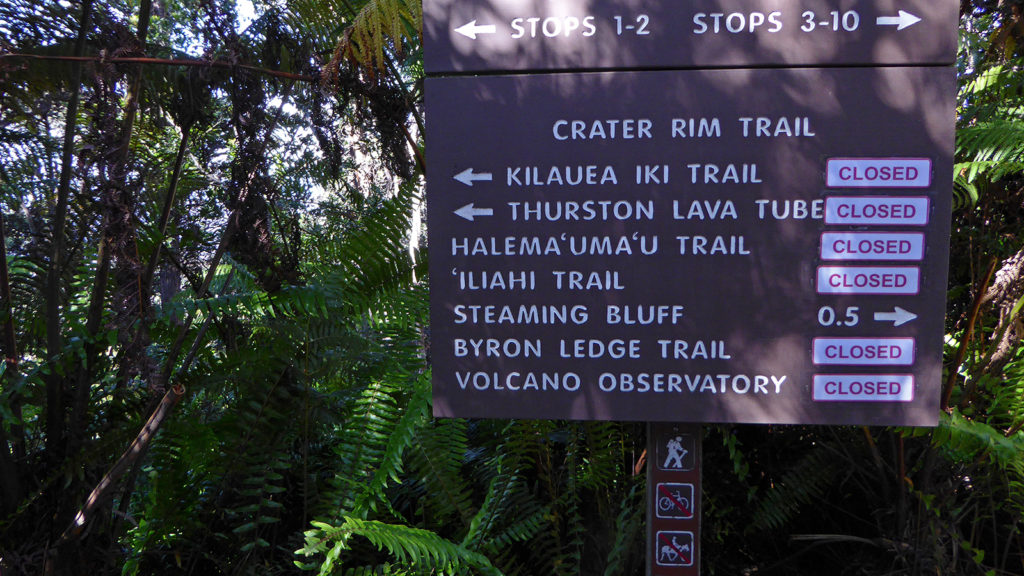
Much of the park is still closed. The Thurston Lava tube turn-out is roped off, you can’t even park there. Many trails are blocked by rock falls, and safety is still very much a concern. No one is quite sure when the road will open up and eat your rental car’s back tire, or if that escarpment is stable. You can see the Jaggar Museum in the distance, it’s perched right on the edge of the crater and no, you can’t go out there, are you crazy, do you want to fall in? Volcano House — the lodge in the park — is just getting back in business. The lobby, with its spectacular views, and the gift shop, are open, the restaurant and the hotel to follow as soon as they can. It’s the water — the volcano disrupted the water for the building. As soon as that’s resolved, you’ll be able to stay overnight in the park again, to have a cocktail with an amazing view.
Right now, though, you can stand on the back patio slurping from your water bottle while getting your head around this gaping hole in the ground where the earth makes itself, where things seem impossibly barren and hostile and also, still so very alive.
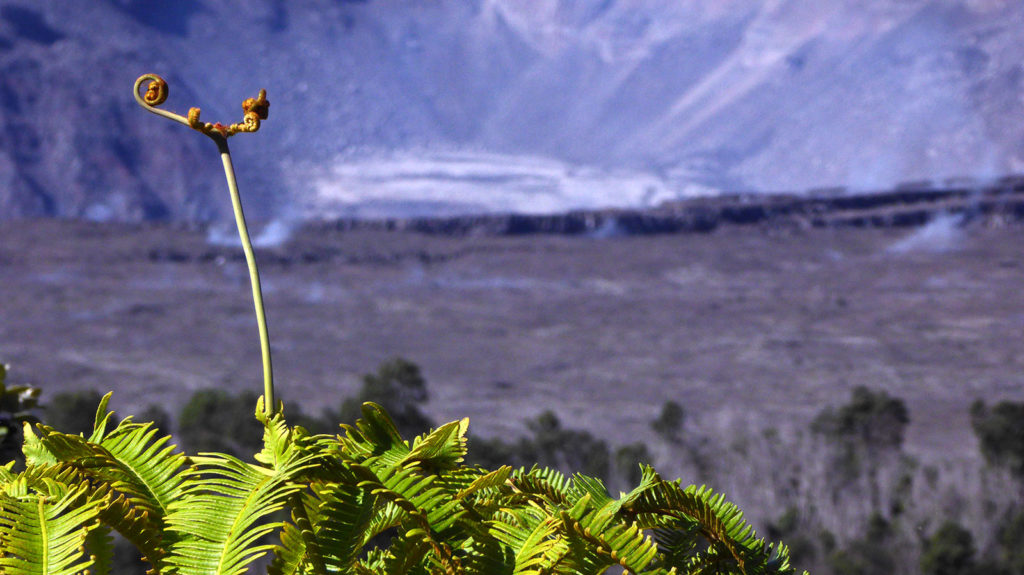
Out at the point, a class of school kids from the Volcano School of Arts and Sciences were doing a value drawing exercise (how light, how dark?) and writing haikus about the landscape. I talked to one of their chaperones, Jeff Judd, a guy who’s lived inside the edge of the crater forever. “My house rattled all the time, I could hear the wires in the fences. You’d get up from sitting at the table and you’d feel a little bit unsteady, like being on a boat. I liked it. It makes you feel so… insignificant, you know?” People have told me you can hear the earthquakes, Judd said, “Oh, totally, it’s this low rumbling noise,” and then he made the sound. Maybe it’s the air moving through the caverns that the lava has opened up, maybe it’s the boulders resettling. No one I talked to seems sure about the ground right now. “What’s holding the mountain up?!” asked Judd, and I began to wonder if we were standing on a giant arch of lava rock with nothing but miles of open space below.
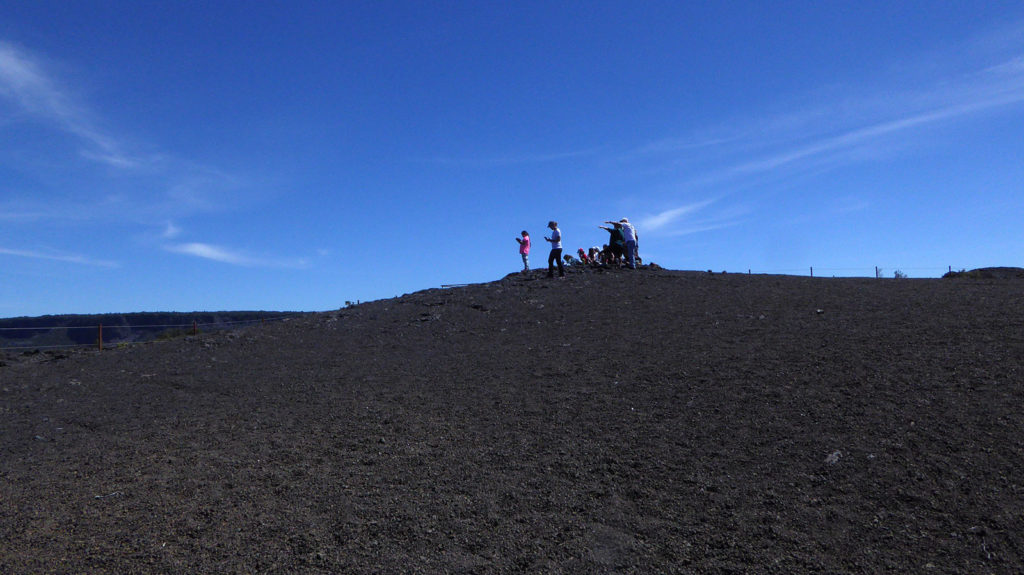
I returned Jessica to her office and drove out Chain of Craters Road. I’ve been to the park several times but never made this drive — I’ve never had the weather on my side, or the time, and the stuff up top has been so diverting I didn’t feel like I was missing anything. But this time, the sky was so blue, so clear. Driving that road feels like flying, you look out your car windshield past vast fields of lava, past a cliff face that drops at a u-turn in the road, and into the endless reach of the blue Pacific. You can see the slight curve of the horizon as it reaches away from you. I stopped several times just to spin in a slow circle and take in the arc of Mauna Loa behind me and the arc of the ocean in front.
“It just makes you feel so insignificant, you know?”
Yes. I know now.
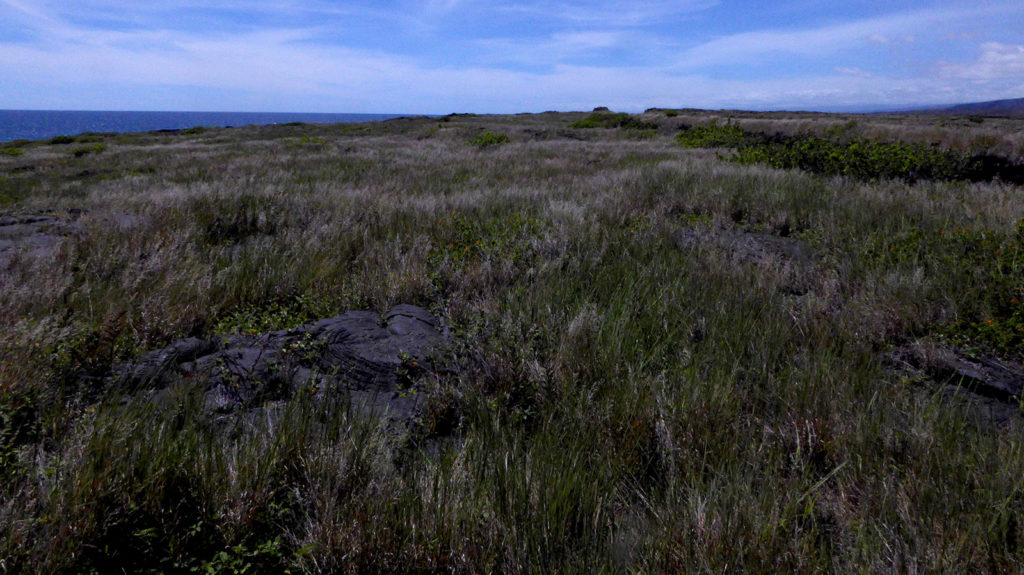
The road ends in a grassy plateau and then, the island tumbles into the surf. There’s noise here too, the boom as the waves hit the black cliff faces, and a lot of different languages — I heard Russian, Japanese, Chinese, and German, and at the snack shack at the end of the universe Louis Armstrong was singing La Vie en Rose. People were taking selfies on the rock wall that keeps you from getting too close to the steep drop into the breakers, and a few visitors were walking down the road towards a glade of palm trees planted — I don’t remember when. It was hot, very hot, and windy, and the fact that I was standing high above the ocean yet the horizon line for the water was above me, still, was starting to freak me out.
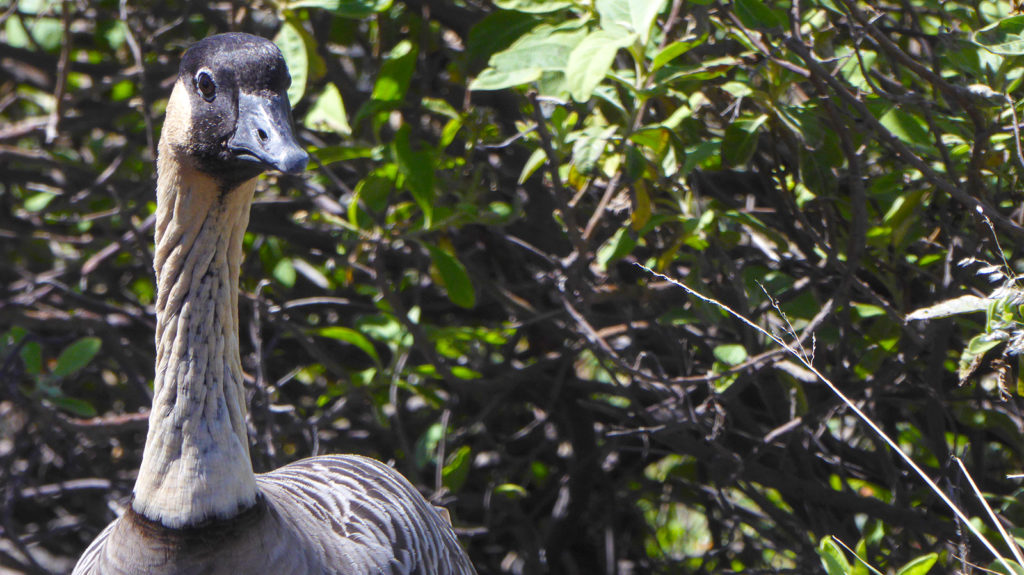
When I parked the car, I asked Ranger Olivia, stationed down at the end of the road for the day, if I could see nene — Hawaii’s endangered goose. “Oh, totally,” she said, and took me around the back of the ranger shed. “They’ve been hanging out here in the shade.” There was one tucked down in the bushes, I could just see its head, and another nearby. When I got back from my walk, I looked again, and they were behind the outhouses, so I squatted on the gravel, trying to keep a respectful distance. I could hear them honking, a low volume Marge Simpson sound of disapproval, but they kept walking towards me while poking for food. A small group of fellow tourists gathered behind me, taking pictures. I got up to walk away from the geese, thinking they might need some space and they followed me, back along the edge of the gravel verge, still making that honking sound. “I’m getting out of the sun, you guys, it’s too hot, but thanks,” I said, and they turned into the scrub.
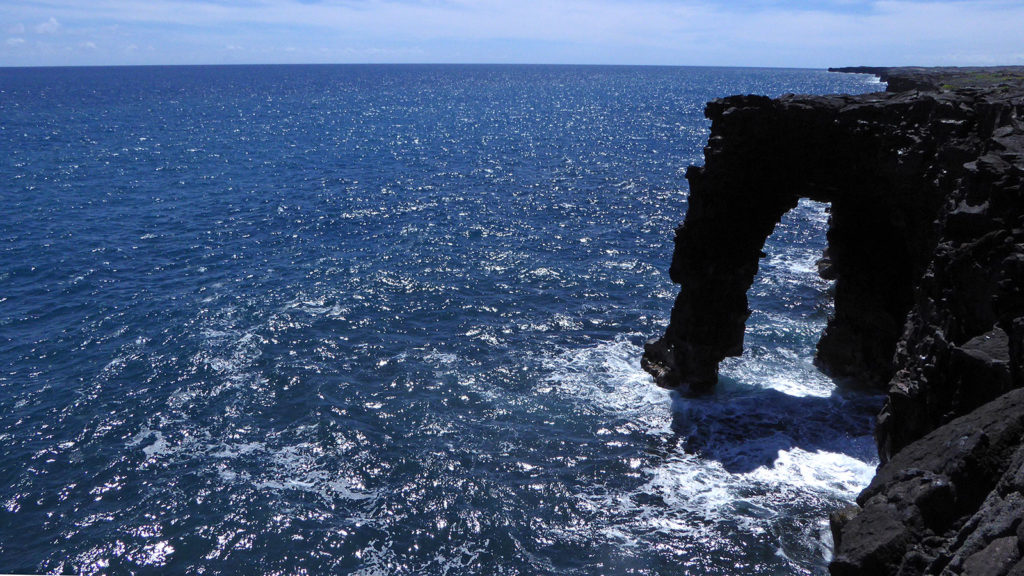
The park is open again, people, and no, you can’t see active lava, and that does not mean there are not a million and one other spectacular things to see there. You should go.

Great photos. Would love to check this place out too sometimes. Hopefully, it will still be open by the time we go to Hawaii.